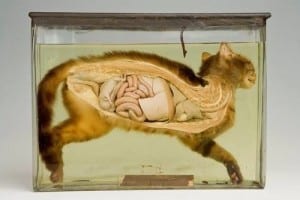From hearing ears to hearing impairment
By rmjllil, on 28 September 2015
By Ann Liljas
When visiting Petrie museum or exhibitions on ancient Egypt you may have seen amulets in the form of the human external ear. These were extremely common in the New Kingdom (c. 1550-1069 BC) and onwards and served a votive function (i.e. a sacred gift to a god or goddess) as “hearing ears”. It was believed that “hearing ears” would encourage the god or goddess to hear and consequently answer the person’s prayer.
My PhD is about hearing impairment in older age and so the symbolic use of the external human ear in ancient Egypt fascinates me. Today one in five (20%) Britons aged 60 years and over have a hearing impairment. This means hearing impairment is very common in older age. And as we live longer than before the proportion of older people is growing and so does the number of people with a hearing problem. Older people with hearing impairment are more likely to have other physical health problems too which may reduce their chances of independent living. Therefore it’s important to undertake research on hearing impairment and in my study I try to understand how hearing impairment influences chronic conditions such as cardiovascular disease, physical disability and cognitive function. By gaining a better understanding of the links between these age-related conditions I hope to establish the impact of hearing impairment on healthy living in later life.
In my study I have used data from questionnaires on health and lifestyle completed by older men from 24 towns across Great Britain. I have then undertaken statistical calculations to measure any associations between hearing impairment and health and lifestyle factors. My findings so far have shown that, compared to men who did not have a hearing problem, those who report a hearing problem were more likely to have poor physical functioning (e.g. having problems using the telephone or public transport on their own), poor quality of life and little social interaction with other people. Having a hearing impairment was also associated with an increased risk of chronic conditions (cardiovascular disease, stroke, chest pain, breathlessness, arthritis, bronchitis) and being obese. So what do these results really say? First of all, there have been several other studies undertaken in other countries investigating how hearing impairment may influence health in later life and my findings are similar to what has been demonstrated by other researchers. Thus, my findings support existing evidence showing that hearing problems restrict older people’s physical functioning which can limit independent living.  But it also show some links between hearing impairment and health that few previous studies have investigated, for example that those with hearing impairment are more likely to be obese compared to those who do not have a hearing impairment. Studies like this are important when it comes to public health policies on hearing impairment and older people. In the conclusions of my study I suggest that hearing impairment needs to be addressed in public health policies. By detecting hearing impairment at an early stage it would be possible to help people with their hearing problem before it gets worse. Such actions could also prevent poor physical functioning and poor social interaction. Local organisations could also play an important role helping older people leading active and social lives. Staying healthy is absolutely crucial to avoid age-related health problems, maintain mental well-being and remain independent in older age.
But it also show some links between hearing impairment and health that few previous studies have investigated, for example that those with hearing impairment are more likely to be obese compared to those who do not have a hearing impairment. Studies like this are important when it comes to public health policies on hearing impairment and older people. In the conclusions of my study I suggest that hearing impairment needs to be addressed in public health policies. By detecting hearing impairment at an early stage it would be possible to help people with their hearing problem before it gets worse. Such actions could also prevent poor physical functioning and poor social interaction. Local organisations could also play an important role helping older people leading active and social lives. Staying healthy is absolutely crucial to avoid age-related health problems, maintain mental well-being and remain independent in older age.
If you want to find out more about my study, which also investigates eyesight problems, you can access it online here.
For more information about the hearing ears in ancient Egypt, visit Petrie museum. Objects with hearing ears on display include for example UC 14543.
References:
Gopinath B et al. Prevalence of age-related hearing loss in older adults: Blue Mountains Study. Arch Intern Med 2009;169:415-6.
Helzner EP et al. Race and sex differences in age-related hearing loss: the Health, Aging and Body Composition Study. J Am Geriatr Soc 2005;53:2119-27.
Akeroyd MA et al.. Estimates of the number of adults in England, Wales, and Scotland with a hearing loss. Int J Audiol 2014;53:60-1.
Crews JE & Campbell VA. Vision impairment and hearing loss among community-dwelling older Americans: implications for health and functioning. Am J Public Health 2004;94:823-9.
Campbell VA et al. Surveillance for sensory impairment, activity limitation, and health-related quality of life among older adults–United States, 1993-1997. MMWR CDC Surveill Summ 1999;48:131-56.
 Close
Close













